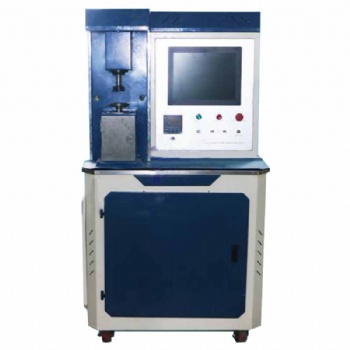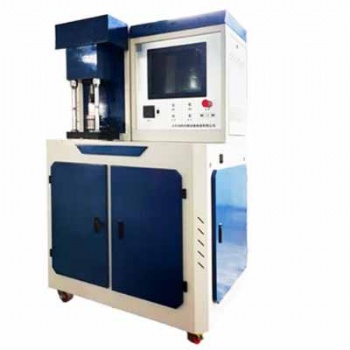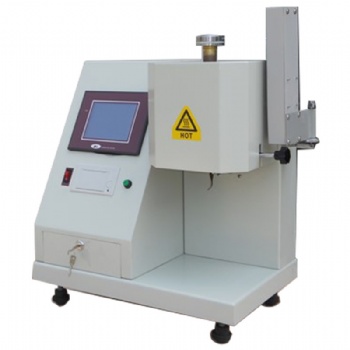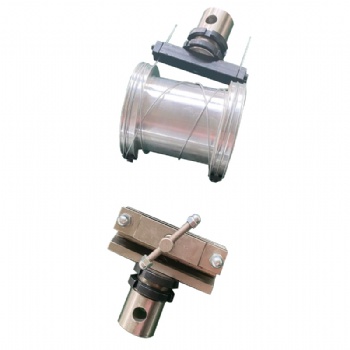News
Leather Breaking Strength Testing Machine: Standards, Features & Applications
Leather Breaking Strength Testing Machine: Standards, Features & Applications
Introduction
The leather breaking strength testing machine is an essential tool for evaluating the durability and mechanical properties of leather materials. It ensures compliance with international test standards such as JIS L1004, JIS L1018, JIS L1031, GB/T 20027, JIS K6328, JIS P8131, JIS P8112, ASTM D2210, TAPPI T403, and GB/T 3093. This testing machine plays a critical role in industries such as footwear, automotive, upholstery, and fashion by determining the material's ability to withstand tensile forces before failure.
Test Standards for Leather Breaking Strength
Several international standards regulate the breaking strength test of leather. Here are some key standards:
JIS L1004, JIS L1018, JIS L1031 – Japanese industrial standards for textile and leather testing.
GB/T 20027 – Chinese national standard for leather mechanical property evaluation.
JIS K6328 – Standard for rubber and leather materials testing.
JIS P8131, JIS P8112 – Japanese paper and leather material strength standards.
ASTM D2210 – American Society for Testing and Materials (ASTM) standard for leather tensile strength testing.
TAPPI T403 – Standard for paper and leather breaking strength testing.
GB/T 3093 – Additional China-specific standards for material durability evaluation.
Features of the Leather Breaking Strength Testing Machine
A high-quality leather breaking strength tester includes the following features:
High-precision load cell for accurate force measurement.
Digital control system with real-time data display and analysis.
Adjustable test speed to comply with different testing standards.
User-friendly interface with automated test execution.
Robust clamps and fixtures to hold leather samples securely.
Compliance with multiple standards, ensuring broad usability across industries.
Applications of Leather Breaking Strength Testing
The leather breaking strength test is crucial for various industries, including:
Footwear Industry: Ensures leather soles and uppers meet durability requirements.
Automotive Sector: Evaluates leather seat covers and upholstery strength.
Furniture Industry: Tests the mechanical strength of leather upholstery.
Fashion & Accessories: Verifies the quality of leather bags, belts, and wallets.
Paper & Packaging: Applies to leather-like paper and coated materials for strength testing.
How to Choose the Right Leather Breaking Strength Testing Machine
When selecting a leather tensile strength tester, consider the following factors:
Testing Standards Compliance – Ensure the machine meets relevant JIS, GB/T, ASTM, and TAPPI standards.
Load Capacity – Choose a model that suits your material’s expected breaking strength.
Automation Level – Opt for a digital or computerized system for accurate and efficient testing.
Software Integration – Look for data analysis and reporting capabilities.
Fixture Adaptability – Ensure compatibility with different sample sizes and shapes.
Recommended Product
For a reliable leather breaking strength testing machine, we recommend the WT-6056 Leather Breaking Strength Tester from WTBTE. This machine ensures precision, efficiency, and full compliance with international standards, making it an ideal choice for manufacturers and testing laboratories.
Conclusion
The leather breaking strength testing machine is an indispensable tool for quality control and material validation across industries. By selecting the right tester that complies with JIS, GB/T, ASTM, and TAPPI standards, manufacturers can ensure superior product quality and durability. For a high-performance leather strength tester, explore WTBTE's testing equipment today!
Keywords: leather breaking strength testing machine, leather tensile strength tester, JIS L1004, ASTM D2210, GB/T 20027, leather strength test, leather quality control, WTBTE leather tester, leather durability testing
Categories
Contact Us
- +86-18615632092
- wtbequipment@hotmail.com
- sophie-tester
- +86-18615632092




 售前客服
售前客服